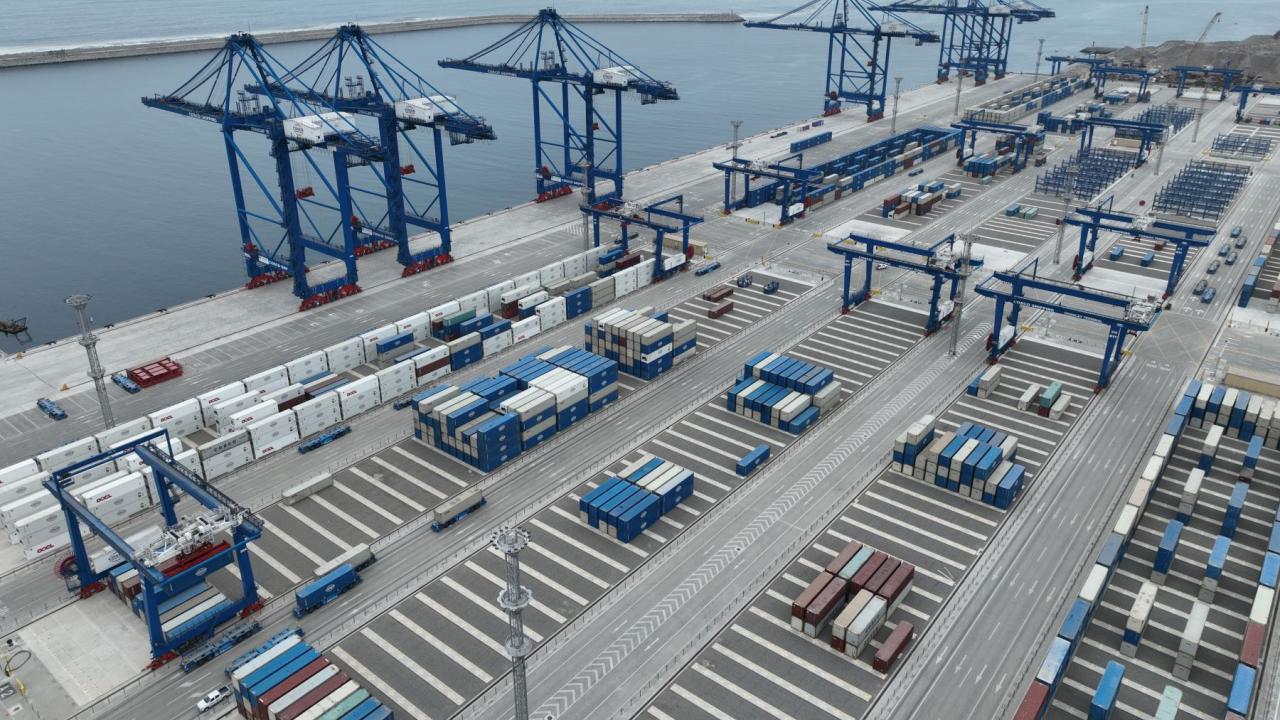
Bananas, shrimp, cocoa, among other products in Ecuador's agri-food supply that, due to being perishable and volume-intensive, may be the greatest beneficiaries of a reduction in transit time to reach China.
Ecuadorian cargo arriving at the megaport of Chancay, in Peru, and then sailing directly to Shanghai, in China, seems closer than expected. This new port, located 70 kilometers from Lima, was inaugurated on November 14 by the president of Peru, Dina Boluarte, in the presence of the president of China, Xi Jinping.
This port terminal, with an initial investment of US$ 1.3 billion, aroused the interest of Ecuadorian businessmen since it was under construction, attracted by the few days of transit it would take to reach China. Chancay's promise is to reduce the time of maritime transport between Peru and China by ten days and save 20% of the logistics cost.
Peru's Ministry of Transport and Communications stressed that it will only take ships 25 days to reach China from Chancay. This port has the capacity to receive ships with a loading capacity of up to 24,000 containers. In addition, it will generate an economic impact in Peru of approximately US$ 4.5 billion annually.
According to Felipe Ribadeneira, executive president of the Ecuadorian Federation of Exporters (Fedexpor), the export sector is currently working on identifying the logistics nodes to reach Chancay and from there consolidate cargo to China, based on their productive location and based on how they can better adapt to these new routes that will be created, which in some cases could be port cabotage and in other cases will be land logistics.
Ribadeneira recalled that these analyses began after a high-level mission from the port of Chancay visited Ecuador a couple of months ago and announced the start of the first phase of operations at the terminal. “For the moment, the intention is to awaken interest in cargo consolidation for products that, due to their volume intensity, may have greater ease in logistical management for shipment from Chancay to China,” said the head of Fedexpor.
What are these products? Ribadeneira talks about bananas, shrimp, cocoa, among other products of the local agri-food supply that, because they are perishable and volume-intensive, could be the biggest beneficiaries of a reduction in transit time to reach the Asian giant.
Ribadeneira's statement coincides with that expressed by José Antonio Camposano, president of the National Chamber of Aquaculture (CNA) and head of the Corporation of Exporters' Guilds of Ecuador (Cordex), a few hours after the inauguration of Chancay, who outlined the export sector's perspectives for having direct connection routes that reduce days of transit, which are complemented by short routes from Ecuador to Peru. "For sectors such as the shrimp industry, which exports a little more than 50% of its production to China, this undoubtedly creates expectations," added the leader.
For Richard Salazar, executive director of the Association for the Marketing and Exportation of Bananas of Ecuador (Acorbanec), Chancay's proposal also creates expectations in his sector. "There was a meeting with them about three months ago here in Guayaquil, at Contecon. I think the benefit could be in reducing transit time, especially to the east, particularly China, and I believe South Korea as well, that would be our benefit and besides that we would have an additional route," said the leader.
He predicts that by early 2025 there will be news about these negotiations with the shipping line Cosco Shipping Lines, the main shareholder of Chancay. “This is an issue that will surely see news at the beginning of next year because Contecon is closing contracts with the shipping companies,” revealed Salazar.









